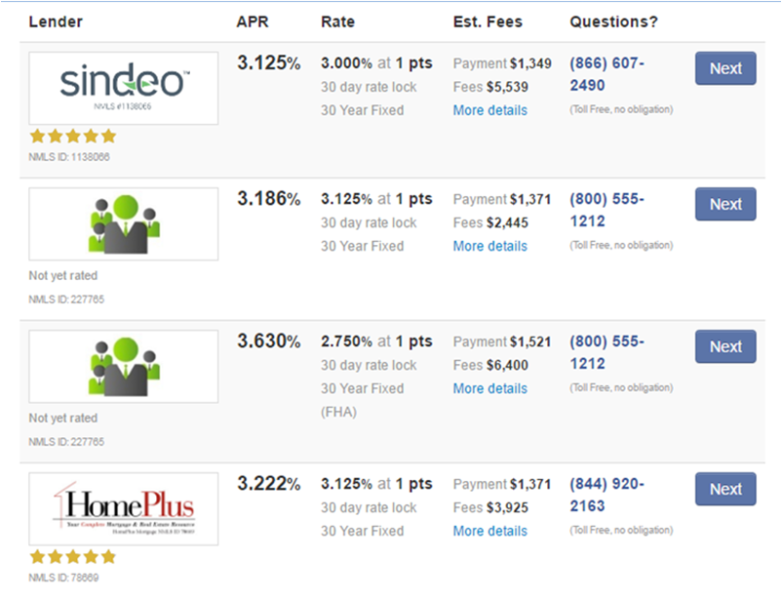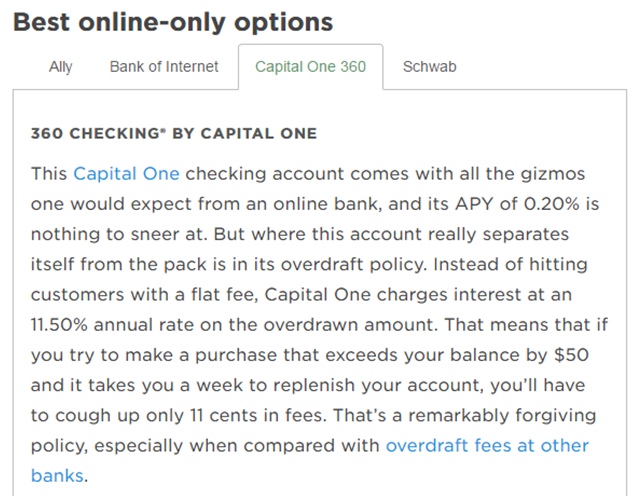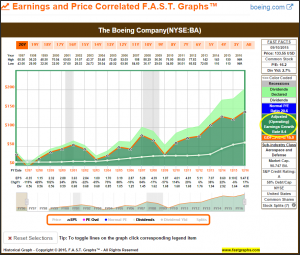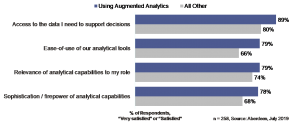In part 2 of her five-part series, contributor Lori Weiman looks at how advertisers in the finance industry can monitor their affiliates to boost ad performance while staying on the government’s good side.

Welcome to part 2 of my five-part series on using advertising partners in highly regulated industries. If you work in one of these industries — finance, retail, pharmaceuticals or education — you already know how complex this topic is, and you are likely in the market for some helpful tips on managing your partners. You’ve come to the right place.
In part 1, I outlined six advertising challenges facing these industries, including the number of documents that need to be reviewed, the involvement of lawyers, who exactly gets blamed when a partner breaks the rule and the reality of advertising lawsuits. I also summarized key points about the four industries mentioned above, so take a look at part 1 to get caught up.
Today, I will look specifically at the finance industry and how monitoring your affiliates can keep you off the government’s radar and improve your ad performance. My company, The Search Monitor, monitors ads, websites and blogs for policy and regulatory compliance and gives me a unique perspective on this topic.
A couple of things to remember about the advertiser-affiliate relationship:
- You, the advertiser, are responsible for their advertising actions on your behalf.
- They, the affiliates, need your help. They’re skilled at driving traffic, not staying current on complex government regulations and obeying them. They don’t have your legal resources.
Regulations governing financial ads
Let’s start by describing the regulatory environment for financial ads. The main organization in control is the Consumer Financial Protection Bureau (CFPB), which was created following the 2008 financial crisis.
The CFPB collects consumer complaints (they’re up to 600,000 so far), sends them to the companies, and then publishes them on its site to help educate consumers. After the crisis, the CFPB updated and strengthened many of the ad regulations that were already present in the Truth In Lending Act.
Here are a few of the CFPB’s most noteworthy regulations that affect advertisers and their affiliates:
- Disclosures: Includes items such as interest rates, payments (initial and ongoing), fees, and even the period of repayment. Further, these must be a “clear and conspicuous disclosure” close to or easily referenced by the initial advertisement.
- “Fixed” language: One hot button for the CFPB is the misleading usage of the term “fixed” in relation to interest rates. For example, advertisers are prohibited from using this term if the rate may be subject to adjustment.
- Government endorsement: The CFPB does not allow advertisers to falsely claim a loan is part of a government-sponsored program or is endorsed by the government in any way, if that is not the case.
- Future claims: The CFPB knows that financial advertisers will want to promote lower payments to consumers than will actually be available after they sign up. Advertisers cannot make a future claim such as “pay only $99 in interest” if that amount could change during the term of the loan.
- Endorsements: This is a big one for financial advertisers, and it’s an easy one to violate. It applies to non-financial institutions as well, but it’s definitely worth mentioning here. According to the Federal Trade Commission, “Endorsements must reflect the honest opinions, findings, beliefs or experience of the endorser. Furthermore, an endorsement may not convey any express or implied representation that would be deceptive if made directly by the advertiser.” This second sentence says that an endorser’s claims are considered as if they were from the advertiser. Further, there are separate rules if the endorsement comes from a consumer, an expert or an organization, so check out the FTC’s exact language for more detail. We will cover this in more detail in our third article, which addresses the issues facing retailers.
By the way, the CFPB is not toothless when it comes to enforcing their regulations against affiliates and advertisers. Their newsroom is filled with articles about lawsuits and multimillion-dollar penalties against violators, including this $19-million dollar suit against a company that ran misleading interest rates on the website of a third-party rate publisher.
A good way to drive home these regulations is to look at a few representative ads run by an advertiser’s affiliate.
Example #1: Credit card blogger

The above screen shot shows an offers page on a financial blog providing tips for earning credit card frequent flier miles. The blogger’s disclosure is a great example of a conspicuous, detailed statement that helps consumers better understand the basis for the recommendations farther down the page.
Lesson: This blogger is an affiliate of several very strong financial brands and is using a disclosure that acknowledges this relationship. These actions should make the brands, and the CFPB, very happy.
Example #2: Loan comparison site

This example shows a home loan comparison site featuring various lenders, their rates, payments and fees, where a single affiliate is likely servicing multiple advertisers. The site appears to be disclosing the key rates in a clear, comparative way. The Truth In Lending Act requires it to be easy for consumer to compare similar loans.
Lesson: The affiliate and its advertisers need to make sure the information is accurate, including that the rates are actually available, the published fees are not misleading, and the use of the term “Fixed” refers to the full term of the loan. In this case, I’d recommend the advertiser use an ad monitoring technology that can be programmed to look for specific words that should or should not appear.
Example #3: Checking account review site

This recommendation appeared on a well-known financial advice site in an article on the best checking accounts of 2016. The affiliate recommends four banks that have the best online-only options, and lists a specific APY and interest rate for its advertiser, Capital One.
Lesson: It would be easy for this affiliate to miss an important update from Capital One that the company increased its APY and interest rates for this checking account — or to forget to include an end date for a specific interest rate promotion. With these little slip-ups, this affiliate would be making misleading financial claims and risking scrutiny from the CFPB. Smart advertisers need to help their affiliates keep their rates updated at all times.
Another important scenario: your affiliate’s sub-affiliates
So far, I’ve discussed affiliates who drive traffic directly to their advertisers. Some financial affiliates, however, farm out their lead generation to other companies (aka sub-affiliates) and do it without the advertiser’s knowledge. Advertisers are virtually blind to the identity of the sub-affiliates and therefore have no way of educating or monitoring sub-affiliates for compliance, which is very risky for the advertiser.
My company’s ad monitoring platform has seen this happening frequently. Examples include quote comparison sites designed for lead generation, such as with insurance, home loans, and especially payday loans. To manage this situation, I recommend that financial advertisers:
- clearly state in their agreement with affiliate networks if the use of sub-affiliates is allowed or not; and
- require affiliates to disclose the list of sub-affiliates so that the advertiser can monitor these channels.
Your handy affiliate monitoring checklist for finance
The regulations and scenarios I’ve just discussed are meant to be shared. If this information stays hidden in a browser bookmark or printout on your desk, I haven’t done my job. I’ve created this handy checklist below to share with your team, client, boss and affiliates:
1. Monitor. Monitor your affiliates’ (and their sub-affiliates’) content, including blogs, webpages, search ads, third-party review sites and lead gen sites. Monitoring should include these areas:
- Claims: Make sure your affiliates’ claims are factual. CFPB is clear that you must avoid misleading comparisons between hypothetical gains and actual gains.
- Disclosure: Make sure your affiliates’ offers properly disclose all key fees, rates, payments and time periods. Disclosures relating to claims or offers must be clear and conspicuous. Are they clear and conspicuous to the consumer?
- Endorsements: Make sure affiliate endorsements are honest and transparent about their connection with the advertiser.
2. Enforcement. When your ad monitoring tool identifies regulatory issues, notify your partners immediately, with clear proof. The best way to help your partners stay in compliance is to provide the partner with a screen shot of its webpage, blog or ad that highlights the problem sections so that the partner knows exactly what to fix, and then continue to monitor the page daily until resolution.
Final thoughts on financial ad regulations
This article has stressed that for financial advertisers, it’s become a business necessity to educate affiliates on financial regulations and then monitor them closely and frequently for compliance. If not, there are enough financial ad regulations to shut down your affiliate channels, attract lawsuits and harm your brand in the eyes of consumers.
Part 3 of this series will focus on another important area of advertising regulation, retail. We will look closely at the Federal Trade Commission’s rules, including the Truth In Advertising Act. Stay tuned for more tips on how to optimize your ad performance in these very complex industries.
Some opinions expressed in this article may be those of a guest author and not necessarily Marketing Land. Staff authors are listed here.
Marketing Land – Internet Marketing News, Strategies & Tips
(99)
Report Post








